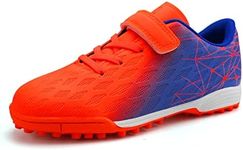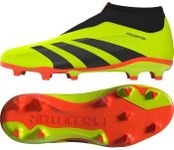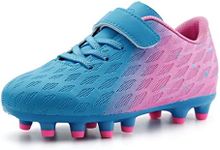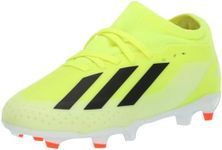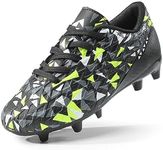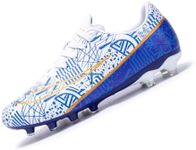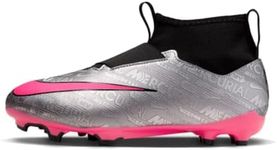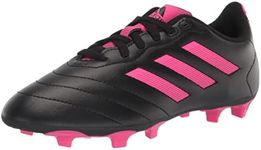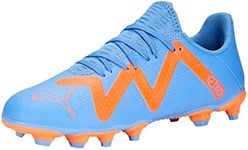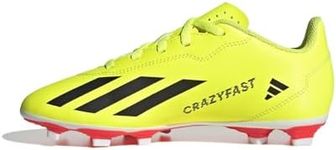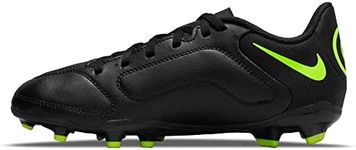Buying Guide for the Best Soccer Cleats For Kids
Choosing the right soccer cleats for kids is important for their comfort, safety, and performance on the field. The right pair can help prevent injuries, provide good traction, and make playing more enjoyable. When shopping for kids' soccer cleats, it's essential to consider the type of surface they'll be playing on, the fit, and the materials used. Understanding the key features will help you make a choice that matches your child's needs and playing style.Type of Studs (Outsole)The studs, or cleats, on the bottom of the shoe provide grip and stability. There are different types: molded studs for firm ground (natural grass), turf shoes for artificial grass, and indoor shoes with flat soles for gym floors. Molded studs are best for most outdoor fields, while turf and indoor shoes are designed for specific surfaces. Choose the type based on where your child will play most often to ensure safety and performance.
Fit and SizingA good fit is crucial for comfort and to prevent blisters or injuries. Soccer cleats should fit snugly but not be too tight, with a little room at the toe. Kids' feet grow quickly, so check sizing charts and consider trying on cleats with soccer socks. Avoid buying shoes that are too large for your child to 'grow into,' as this can affect their movement and safety.
MaterialCleats are made from synthetic materials or leather. Synthetic materials are lightweight, durable, and often more affordable, making them a popular choice for kids. Leather offers a softer feel and can mold to the foot, but it may require more care. For most kids, synthetic cleats are practical and easy to maintain, but if your child plays frequently, leather might offer extra comfort.
Closure SystemSoccer cleats come with different closure systems, such as laces, Velcro straps, or a combination. Laces allow for a more adjustable fit, while Velcro is easier for younger kids to manage on their own. Choose a closure system that matches your child's age and ability to tie laces, ensuring the shoes stay secure during play.
Ankle Support (Low-cut vs. Mid-cut)Most soccer cleats are low-cut to allow for better movement and agility. Some models offer a slightly higher cut for extra ankle support. If your child has a history of ankle injuries or needs more stability, consider a mid-cut design. Otherwise, low-cut cleats are usually sufficient for most young players.
WeightLighter cleats help kids move quickly and comfortably, while heavier cleats may offer more protection. For most children, lightweight cleats are ideal as they reduce fatigue and make running easier. If your child plays in a defensive position or needs extra protection, a slightly heavier cleat might be beneficial.
